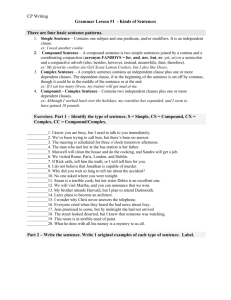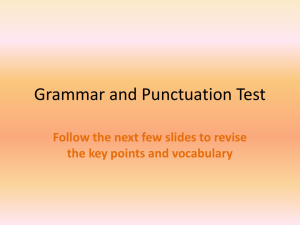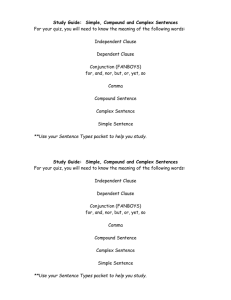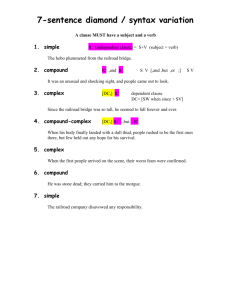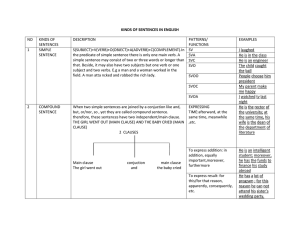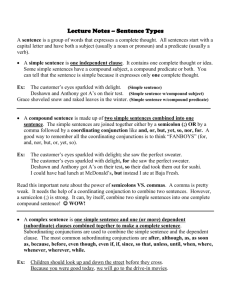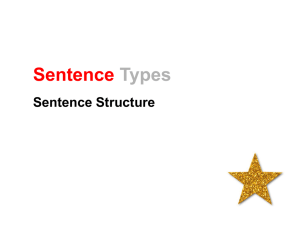compound complex sentences handout
advertisement
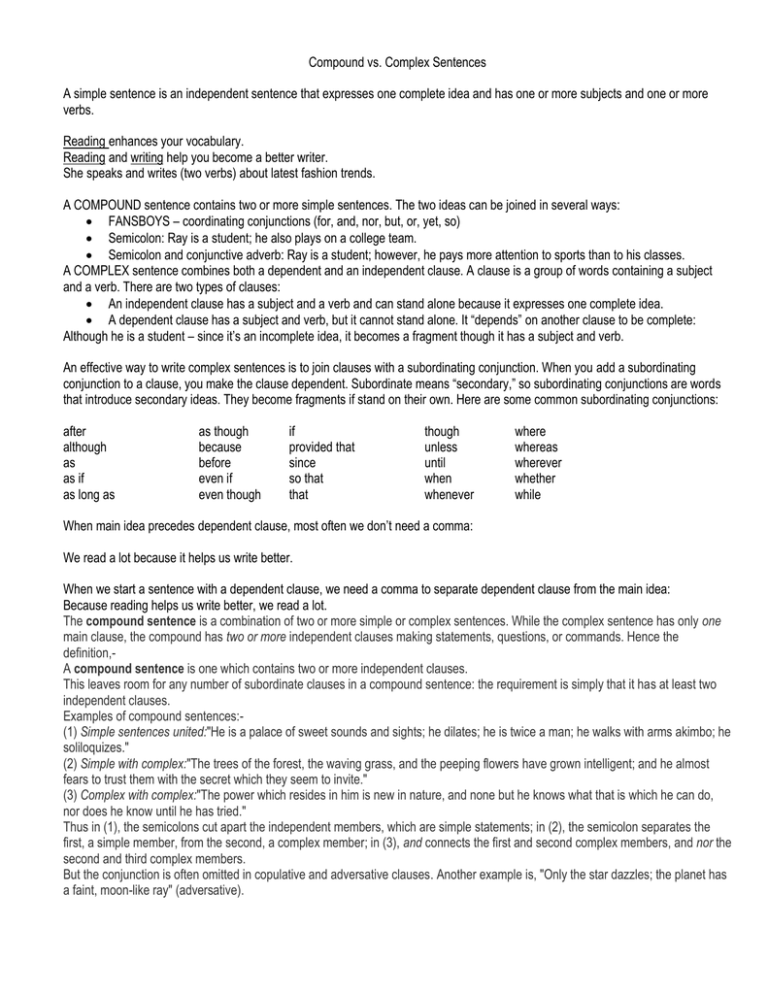
Compound vs. Complex Sentences A simple sentence is an independent sentence that expresses one complete idea and has one or more subjects and one or more verbs. Reading enhances your vocabulary. Reading and writing help you become a better writer. She speaks and writes (two verbs) about latest fashion trends. A COMPOUND sentence contains two or more simple sentences. The two ideas can be joined in several ways: FANSBOYS – coordinating conjunctions (for, and, nor, but, or, yet, so) Semicolon: Ray is a student; he also plays on a college team. Semicolon and conjunctive adverb: Ray is a student; however, he pays more attention to sports than to his classes. A COMPLEX sentence combines both a dependent and an independent clause. A clause is a group of words containing a subject and a verb. There are two types of clauses: An independent clause has a subject and a verb and can stand alone because it expresses one complete idea. A dependent clause has a subject and verb, but it cannot stand alone. It “depends” on another clause to be complete: Although he is a student – since it’s an incomplete idea, it becomes a fragment though it has a subject and verb. An effective way to write complex sentences is to join clauses with a subordinating conjunction. When you add a subordinating conjunction to a clause, you make the clause dependent. Subordinate means “secondary,” so subordinating conjunctions are words that introduce secondary ideas. They become fragments if stand on their own. Here are some common subordinating conjunctions: after although as as if as long as as though because before even if even though if provided that since so that that though unless until when whenever where whereas wherever whether while When main idea precedes dependent clause, most often we don’t need a comma: We read a lot because it helps us write better. When we start a sentence with a dependent clause, we need a comma to separate dependent clause from the main idea: Because reading helps us write better, we read a lot. The compound sentence is a combination of two or more simple or complex sentences. While the complex sentence has only one main clause, the compound has two or more independent clauses making statements, questions, or commands. Hence the definition,A compound sentence is one which contains two or more independent clauses. This leaves room for any number of subordinate clauses in a compound sentence: the requirement is simply that it has at least two independent clauses. Examples of compound sentences:(1) Simple sentences united:"He is a palace of sweet sounds and sights; he dilates; he is twice a man; he walks with arms akimbo; he soliloquizes." (2) Simple with complex:"The trees of the forest, the waving grass, and the peeping flowers have grown intelligent; and he almost fears to trust them with the secret which they seem to invite." (3) Complex with complex:"The power which resides in him is new in nature, and none but he knows what that is which he can do, nor does he know until he has tried." Thus in (1), the semicolons cut apart the independent members, which are simple statements; in (2), the semicolon separates the first, a simple member, from the second, a complex member; in (3), and connects the first and second complex members, and nor the second and third complex members. But the conjunction is often omitted in copulative and adversative clauses. Another example is, "Only the star dazzles; the planet has a faint, moon-like ray" (adversative).

